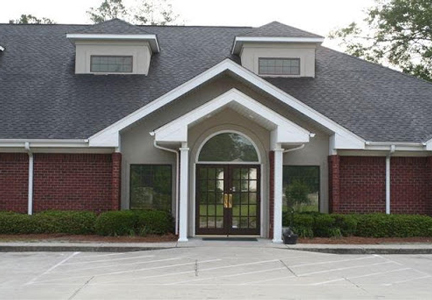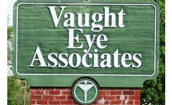
Sue Gavalis has been an optician for more than four decades. I’ve known her for two. She recently moved to South Carolina and I wanted to find out how she was doing during COVID-19. As with other essential practices, her employer, Vaught Eye Associates, Conway, SC, changed the way it practiced based on CDC, AOA and AAO guidelines. How were they coping? How were they taking care of patients? This is what Sue told me.
The owners, James Vaught, OD; Dylan Vaught, OD; and Heather Vaught, OD made the hard decision to close the practice on March 18, except for emergency care. Initially, the owners along with optometrists Ed Weiner and Garrett Wise provided only emergency care. They assisted some patients by phone and helped others via telemed visits. It was a difficult time for them and their patients. They remained optimistic. They did not lay off their staff, expecting to reopen during early April. As COVID-19 cases increased, they postponed opening until April 27. Dr. Vaught generously continued to pay his employees during the full five-and-a-half-week closure.
 |
The owners developed their plan for reopening by relying on CDC, state, federal, AOA and AAO guidelines, PPE availability and levels of contagion in the area. Coincidentally, they were planning a remodel when the virus hit. Instead of postponing it, they grabbed an opportunity to transform the office into a COVID-19 safe environment for patients and staff. They revised the remodel. Permanent barriers were set up at check-in and check-out. Workers put markers on the floor and outside for social distancing. And larger shields were installed on slit lamps. That was in addition to the paint, carpeting and furniture installed.
Before the practiced opened, the staff blocked off some waiting room chairs to ensure distancing and planned to clean each chair a patient occupied. They placed disinfectant wipes on tables and carts. There were also containers of hand sanitizer and bleach and water disinfectant. Ingeniously, they set out a generous supply of pens to ensure that each is single use. Finally, there were masks for the entire staff and every patient.
That was the easy part. How does a practice keep everyone safe? The Vaught’s took the most cautious point of view: Everyone could be a carrier. They started gradually. In the pre-COVID days, three doctors saw four patients an hour each. During the first three days after opening, one doctor saw two patients per hour to ensure the staff had time to sanitize patient spaces and exam rooms. The next day, two doctors cared for two patients per hour, and for the next two days, three doctors treated two patients per hour. The following week, they increased the number of patients to three per hour. The re-start went well. As of the beginning of May, the practice has resumed its full operations and regular schedule. The entire staff is back in the practice. In addition to providing the necessary optical and clerical services, they are disinfecting the office. Although the practice didn’t formally announce the reopening, rescheduling and phone and walk-by contact has bookings out about two weeks.
Patient flow and floor plan allow the office to accommodate up to thirty patients and staff safely. Although the outside doors are locked, a receptionist is stationed there to let in one patient at a time except in the case of a child or adult needing assistance. All others are instructed to wait in their cars for their appointments. The staff member takes patient temperatures, asks COVID exposure questions, answers patient questions, provides masks and records entry and exit times. Patients receive the paper with that information and bring it in with them where staff scans the information into the permanent record, which will be helpful if contact tracing is needed. Once patients leave an exam room, the room is blocked until it is sanitized. Inside the room, staff cleans every space as if there were a case of contagious conjunctivitis.
In the optical department, each optician is assigned to one computer for the day. Patients are encouraged to remain seated while they select frames. If they choose to approach the frame boards, an optician will accompany them and put any frames the patient touches in a tray for cleaning. The frames are cleaned with a mixture of 3% hydrogen peroxide and water and dried with a paper towel, as manufacturers recommend. Each station has a caddy with cleaning supplies and paper towels. When a patient leaves, the staff member cleans the chair, desk, calculator, keyboard, mirrors and pupillometer, and of course, performs proper hand washing. Patients who need repairs or adjustments wait in their cars. Opticians clean the glasses with soap and water before working on them, clean them again when finished and put them in a plastic bag for delivery to the patient outside.
The frame boards are full as a result of making alternate choices from vendor websites based on availability. The optical maintains a 50/50 blend of frames from independent and major manufacturers because some major manufacturers are experiencing delayed delivery, while independent companies have fared better. The opticians discourage special frame orders by offering a similar style or color that is in stock. Because some labs have closed or were open limited hours, there have been some delays in getting lenses, but a 7 to 10-day time frame for delivery to patients seems adequate. Contact lens inventory has not been affected.
Most patients are receptive to the new environment and procedures, although some resist wearing a mask. Staff answers those objections with their new mantra: We are protecting people. There are no exceptions. Staff have adapted to the changes well, although there are more tasks, more thinking and more time needed to get everything done. At the end of the day masks have become uncomfortable, hands are rough from constant washing, they are a little more tired and a little more anxious. Social distancing and masks seem to make previously friendly behaviors with patients and staff more formal, but they try to “keep it light.” A patient told Sue she knew she was smiling from her eyes, and Sue notes that after 45 years as an optician, less personal contact with patients was a difficult change.
Vaught Eye Associates plans to maintain the current procedures for as long as necessary after restrictions are completely lifted in case the virus flares up. They anticipated possibilities well and are equipped to act on any issues, recommendations or guidelines that come up. Starting slowly enabled adaptability going forward to protect the health and safety of everyone. A careful plan with attention to every detail shows us what is possible in this new world of vision care.
You can learn that there is a way to determine the number of frames and the importance of brands a practice should carry with our CE, Art of Assortment Planning, at 2020mag.com/ce. This course is free courtesy of a generous educational grant from Luxottica










